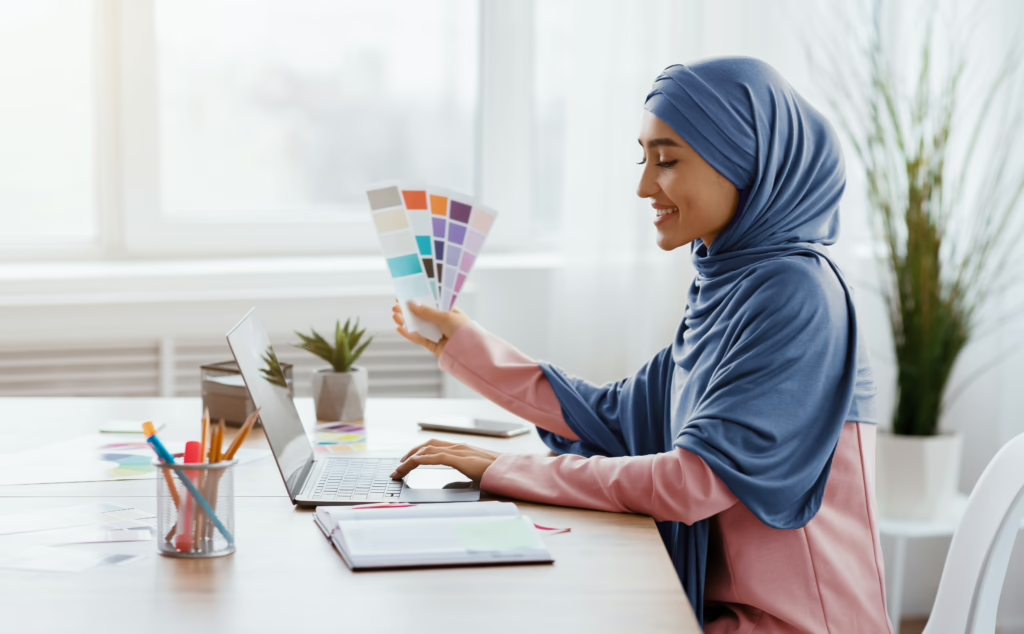
The Power of Using Color in Design
Using color effectively is essential in interior design and home staging. Color influences mood, perception, and spatial dynamics, making it a powerful tool in creating inviting and functional spaces. Whether staging a home for sale or designing a client’s dream space, understanding the different types of color and their impact can elevate your work and set you apart.
In this guide, we’ll explore color theory, types of color schemes, and expert tips for using color to maximize impact in design.
🎨 Understanding the Different Types of Color
Color can be categorized into primary, secondary, and tertiary hues, each playing a role in design composition.
Primary: The Foundation
Primary—red, blue, and yellow—are the building blocks of all other colors. These hues cannot be created by mixing other colors.
- Red: Bold, energetic, and stimulating. Ideal for accent pieces.
- Blue: Calming and serene. Works well in bedrooms and offices.
- Yellow: Cheerful and bright. Often used in kitchens or creative spaces.
Secondary: The Blend of Two
Secondary—orange, green, and purple—are formed by mixing two primary colors.
- Orange: Warm and inviting, perfect for social areas.
- Green: Refreshing and natural, bringing an organic feel to interiors.
- Purple: Luxurious and sophisticated, often used in elegant designs.
Tertiary: A Mix of Primary and Secondary
Tertiary —like red-orange, yellow-green, and blue-violet—are created by mixing a primary color with a secondary color. These hues offer a broader range of depth and variation in design palettes.
🎨 Choosing the Right Scheme for Your Space
Once you understand the types of color, the next step is creating a cohesive palette that enhances the environment.
1. Monochromatic Scheme
A monochromatic palette uses different shades of a single color, creating a harmonious and elegant look. This is great for minimalist spaces and high-end staging projects.
2. Analogous Scheme
Analogous schemes use three colors next to each other on the color wheel, such as blue, teal, and green. This creates a seamless, soothing effect, ideal for bedrooms and living rooms.
3. Complementary Scheme
A complementary scheme pairs two opposite colors (like blue and orange), offering bold contrast and visual energy. This is perfect for statement rooms or modern designs.
4. Triadic Scheme
A triadic scheme uses three evenly spaced colors on the color wheel (such as red, yellow, and blue), ensuring vibrancy while maintaining balance. This is great for playful, creative interiors.
🎨 Using Color Psychology in Home Staging & Design
Color psychology influences how people feel in a space. Choosing the right color for staging and interior design impacts buyer perception and mood.
- Neutral Tones: Timeless and inviting, perfect for staging.
- Cool Colors (Blues & Greens): Promote relaxation and productivity.
- Warm Colors (Reds & Yellows): Stimulate energy and warmth.
- Earthy Tones (Beige, Taupe, Terracotta): Create a cozy, natural ambiance.
For home staging, neutral tones are best as they appeal to a broad range of buyers. Pops of color in accessories, artwork, or accent walls can add personality without overwhelming the space.
Final Thoughts: Mastering Color in Design
Using color correctly enhances the design process and elevates property appeal. Whether staging homes or designing interiors, a thoughtful strategy creates memorable spaces that attract clients and buyers alike.
Ready to Elevate Your Staging & Design Skills?
🔗 Join Our Private Facebook Group: The Interior Design/Home Staging Business Incubator
🔗 Expand Your Expertise: The Academy of Home Staging & Design
Turn your passion for design into a thriving career today! 🚀